With some help from BMW, the Toyota Supra is one fast & furious machine. But how much power does the current-gen’s turbo I-6 really provide?
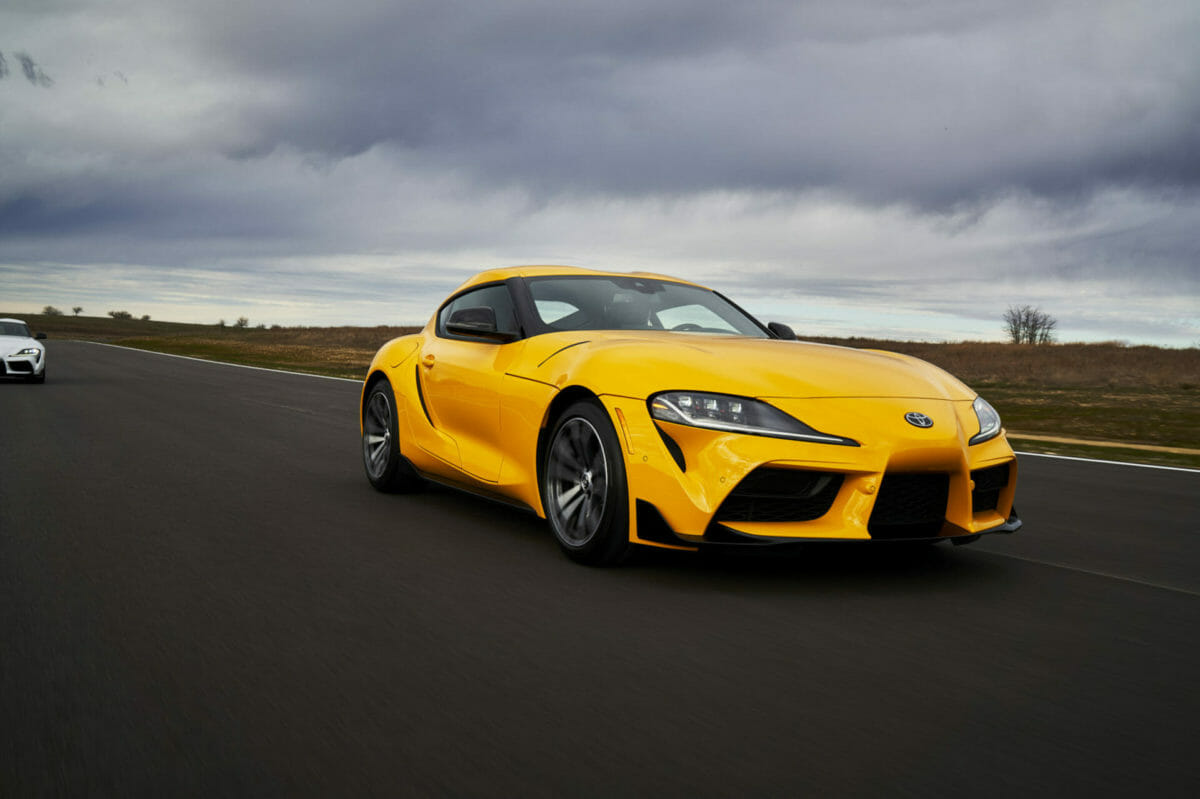
A Yamaha-built inline-six powered Toyota’s first sports car, the ultra-low-volume 2000GT of 1967-70. When it came time in the late-1970s for Toyota to get into the competitive and image-building sport-luxury grand touring business, its designers began with the four-cylinder Celica (the “Japanese Mustang”) and stretched the hood and front quarter-panels to accommodate the flagship inline-six from the large Cressida sedan. The new car was badged the Celica Supra for its first two generations.
Now, the Toyota Supra is in its fifth generation, with a 21-year hiatus between the fourth and fifth generations. The sports coupe has always been powered by an inline six-cylinder engine. But the first four generations came with Toyota-built engines, while the fifth-gen.’s turbo I-6 is from BMW.
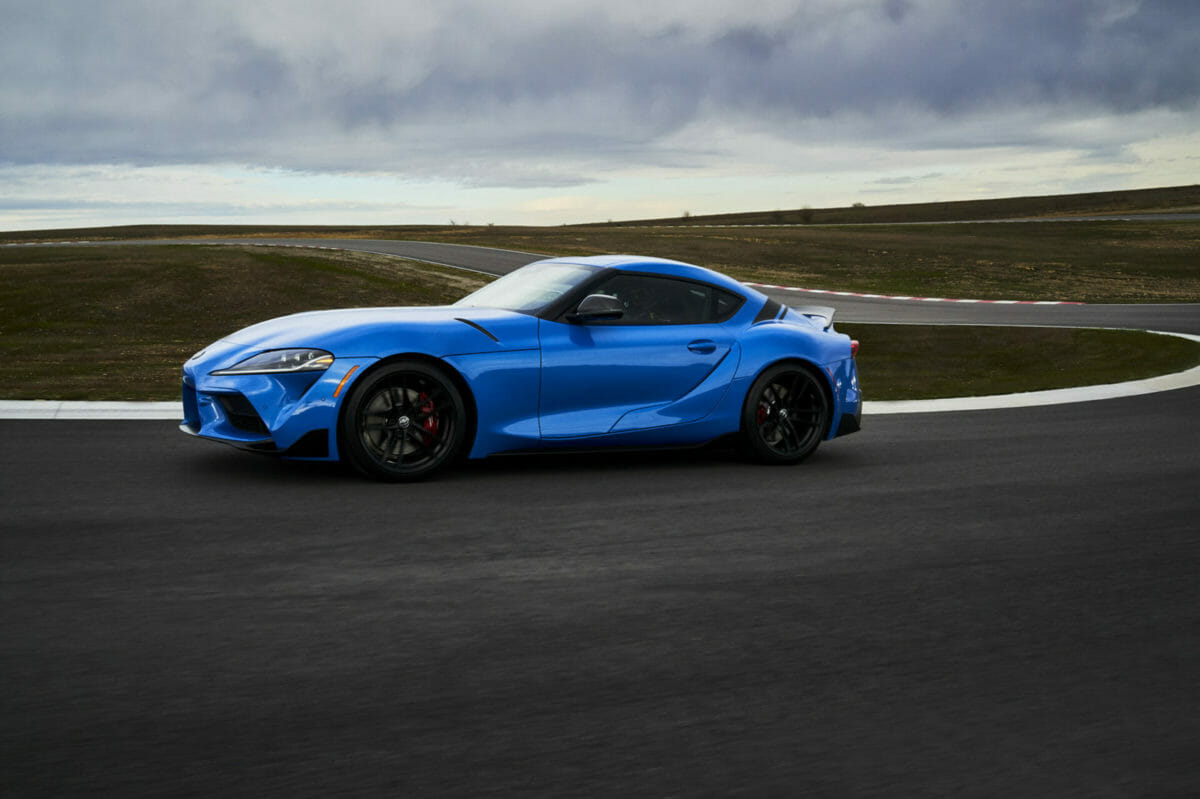
What are the Specs of the Toyota Supra’s Engine Options?
The new Toyota Supra coupe, codenamed A90, returned for the 2019 model year in North America, built on the same BMW platform as the German automaker’s Z4 convertible sports car, and with its bigger of two engine options, a 3.0-liter inline-six with a twin-scroll turbocharger and four valves per cylinder, double overhead camshafts (DOHC) and variable valve timing and lift.
Available only with an eight-speed automatic transmission and requiring premium fuel, the A90 was rated 335horsepower @ 5,000-6,000 rpm, and 365 lb.-ft. @ 1,600-4,500 rpm. That wide range of peak torque revs points to the advantages of a twin-scroll turbocharger, which is designed with a small turbo scroll to kick in at low rpm and a larger scroll for higher rpm to prevent “turbo lag,” followed by a sudden kick-in of power as you’re accelerating. EPA estimated fuel mileage is 22 mpg city, 30 mpg highway, and 25 mpg combined.
A 2020 Toyota Supra A90 tested by Motor Trend accelerated from 0 to 60 mph in 3.9 seconds.
For the 2021 model year, Toyota updated the BMW inline-six turbo and added a BMW inline-four turbo for the North American market. The result is the A91 Supra, with the same 3.0-liter twin-turbo inline-six, but with the exhaust manifold relocated from inside, to outside the cylinder head. This ups power by 17 horses, to 382 horsepower @ 5,800-6,500 rpm, and with 368 lb.-ft. of torque @ 1,800-5,000 rpm.
Toyota says the A91 also has had a thorough reworking of the chassis and suspension components, making it a vastly different car even if the sheet metal looks unchanged.
Also for ’21, Toyota has added the 2.0-liter turbocharged inline-four option previously available only in overseas markets. The 16-valve DOHC engine also requires premium fuel and is rated 255 horsepower at 5,000-6,000 rpm and 295 lb.-ft. of torque at 1,550 – 4,400 rpm.
EPA fuel mileage numbers have not been published yet for either engine. Enthusiasts who prefer the traditional sports car feel of a manual gearbox had hoped Toyota would bring over a six-speed manual option with the turbo four-cylinder version, as available in those overseas markets, but so far it comes only with the same eight-speed automatic as in the inline-six version.
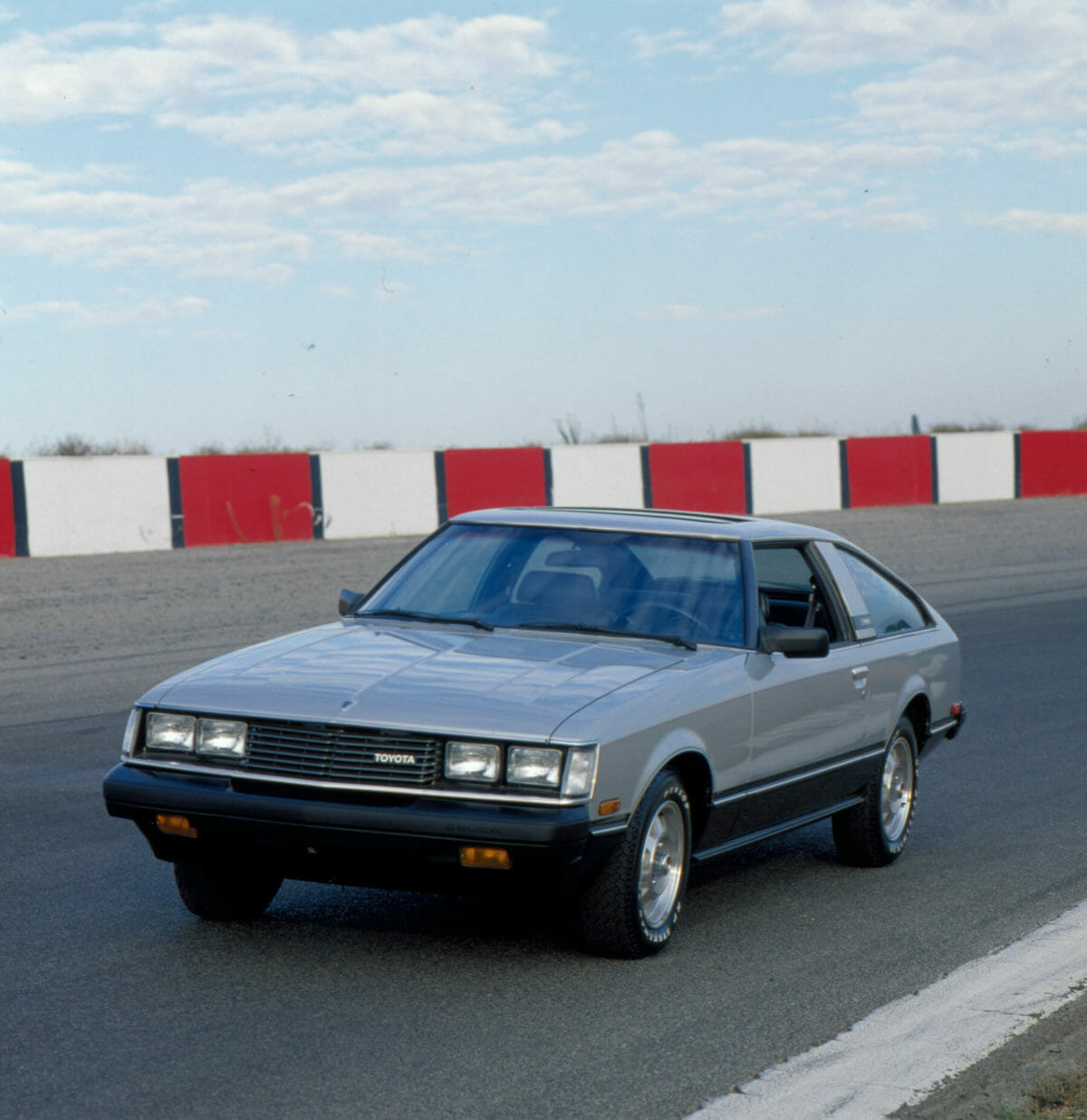
A40 & A50 Toyota Supra Engines (1979-1981)
The A40 Toyota Celica Supra made its debut in the U.S. for the 1979 model year. Like many sports and GT cars offered over the years, it used the best engine available from a much larger sedan in the model lineup (in this case, the first two generations of Cressida), for inherently better performance in a lighter car body.
Early Celica Supras came with Toyota’s 4M-GE 2.6-liter I-6 (“M” was the automaker’s engine code for all straight-six-cylinder engines), with a single overhead camshaft (SOHC) and two valves per cylinder. It did the 0-60 mph sprint in 11.5 seconds, according to Motor Trend.
For 1980, the A40 Supra became the nearly identical-looking A50, but with a significantly upgraded engine; A double-overhead-cam (DOHC), 2.8-liter 5M-GE, with Bosch L Jetronic-derived electronic fuel injection and Toyota’s first use of hydraulic valve lifters.
The 5M-GE “looked like a Jaguar XK120” six (a legendary sports car with a legendary engine) with two cam covers and the six spark plugs in-between, says Cooper Ericksen, group vice president for product planning at Toyota Motor Sales in the U.S., and a three-time Supra owner.
The National Highway Transportation and Safety Administration (NHTSA) lists just one complaint about A40/A50 Supra engines, for a 1980 model’s “minor leak in the number-six cylinder,” though the complaint was dated 1999 when the car was 19 years old.
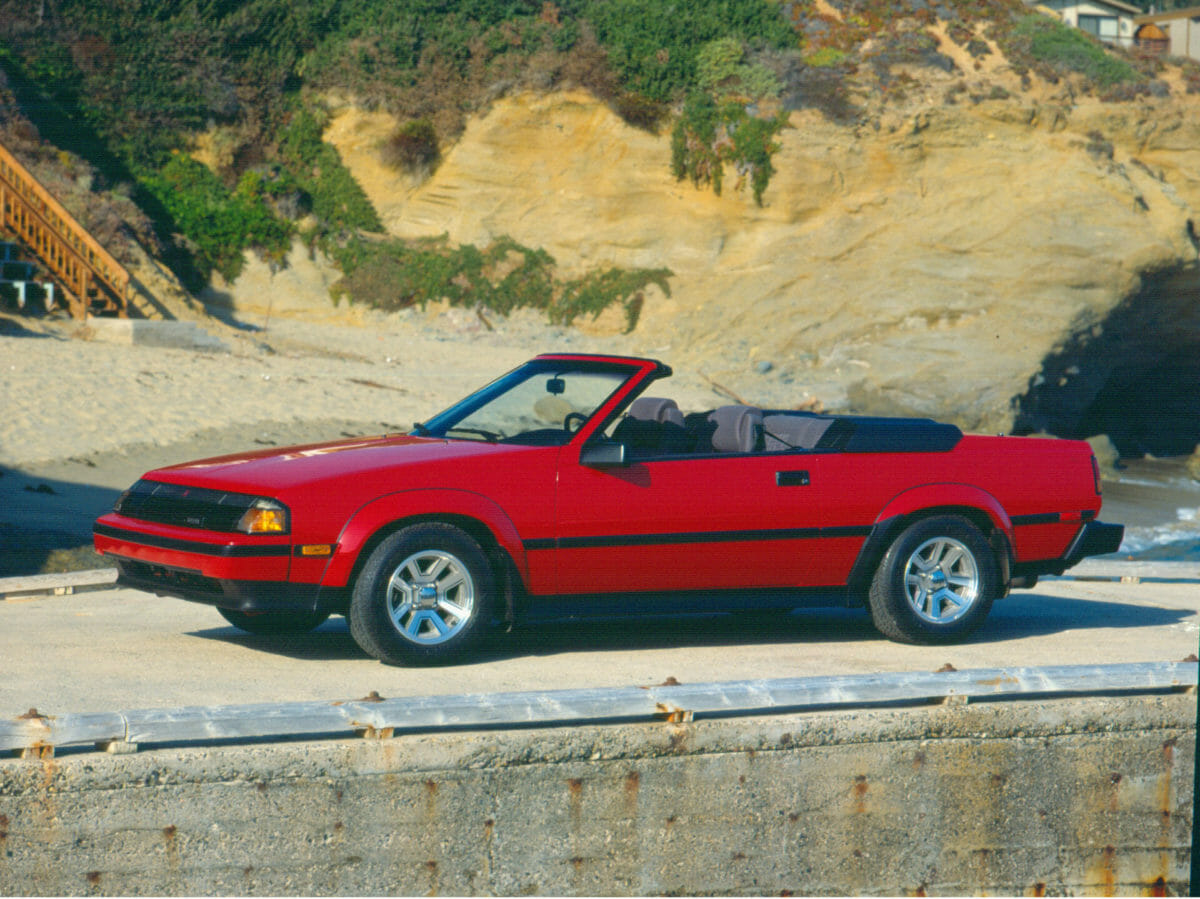
A60 Toyota Celica Supra Engine (1982-1986.5)
The chassis, body, and interior of the second-generation Supra were all-new, but the engine was the carryover 2.8-liter 5M-GE inline-six from the A50, now tweaked for an increase to 145 horsepower.
Two trim levels were available in the North American market; the P-Type (for “performance”) trim, available only with a five-speed manual, and the L-type, (“luxury”), with a five-speed manual or four-speed automatic.
Though the second-generation Celica Supra was bigger, heavier, and wider than the A50 with the same engine, it was still a credible grand tourer (not a pure, lightweight sports car), made for spirited handling, but comfortable cross-country driving more so than straight-line performance.
There were four complaints to the NHTSA about the A60’s carryover engines, all related to overheating. “There were problems with valve covers, and cam cover leaks,” Ericksen admits, “but the engine was very reliable.”
In fact, the four A60 Supra engine complaints were filed with NHTSA when the cars were between nine and 15 years old. The Toyota inline-six engines also are known for oil-sludge issues, but only when proper oil change intervals are not maintained.
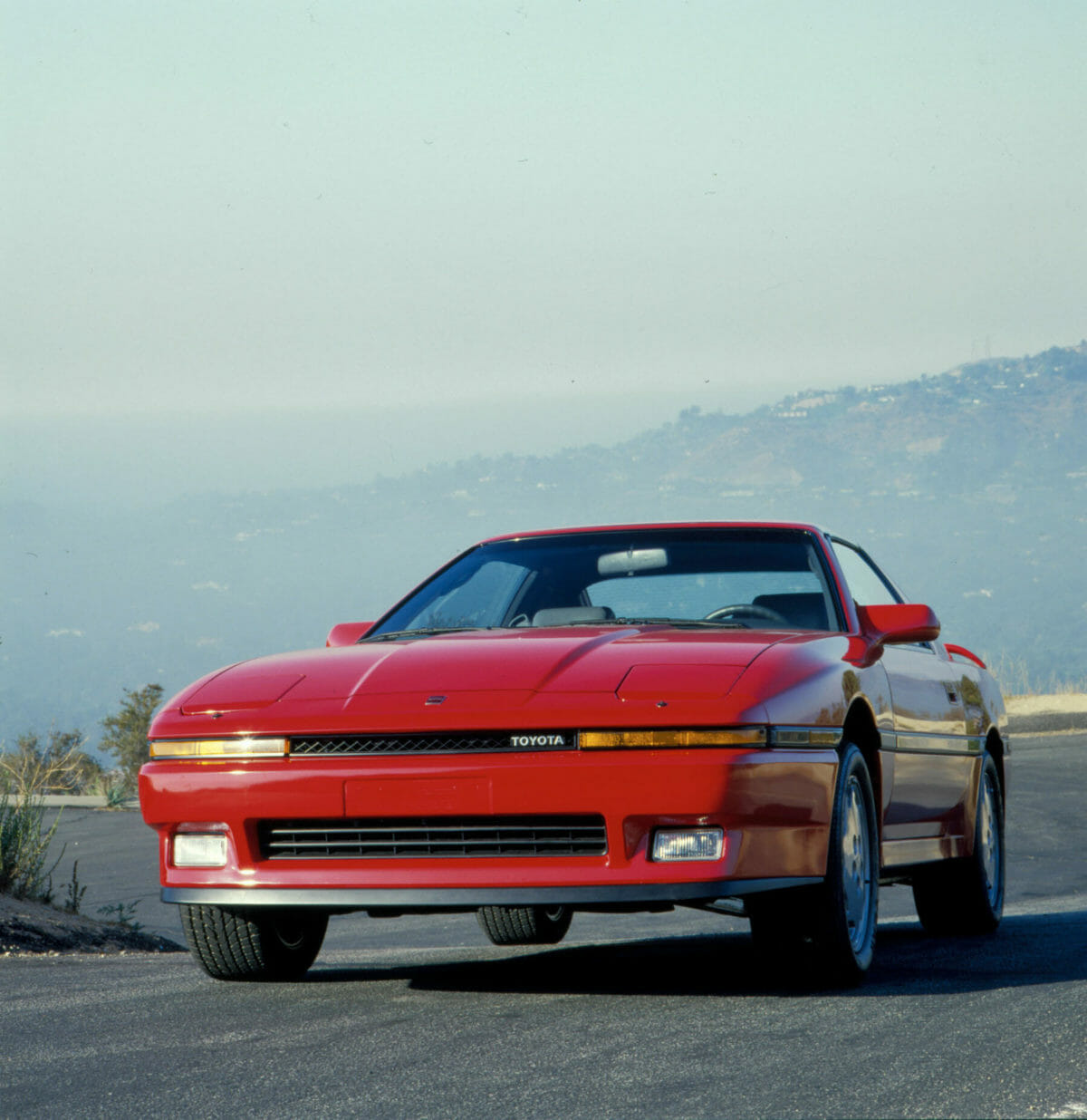
A70 Toyota Supra Engine (1987-1993)
An all-new Celica switched to a front-wheel-drive platform shared with the Corolla sedan, while the all-new Supra remained rear-wheel-drive and thus dropped “Celica” from its badge.
Toyota developed a new engine for the new car, offered in both naturally aspirated and turbocharged form. The naturally aspirated Toyota 7M-GE inline-six was a 3.0-liter 24-valve, double overhead cam mill rated 200 horsepower, while the turbocharged 7M-GTE was rated 231 horsepower.
For the 1989 model year, Toyota modified the A70’s 7M-GTE with a wastegate actuator and revised the engine management system for two more horses and an extra 21 lb.-ft. of torque.
The next year, Toyota lowered the redline due to a heavier crankshaft created by adding counter-balancers to the numbers two and five cylinders, no doubt for smoother power. So enthusiast collectors looking for an A70 Supra will likely prefer a higher-revving 1987 or ’88 model.
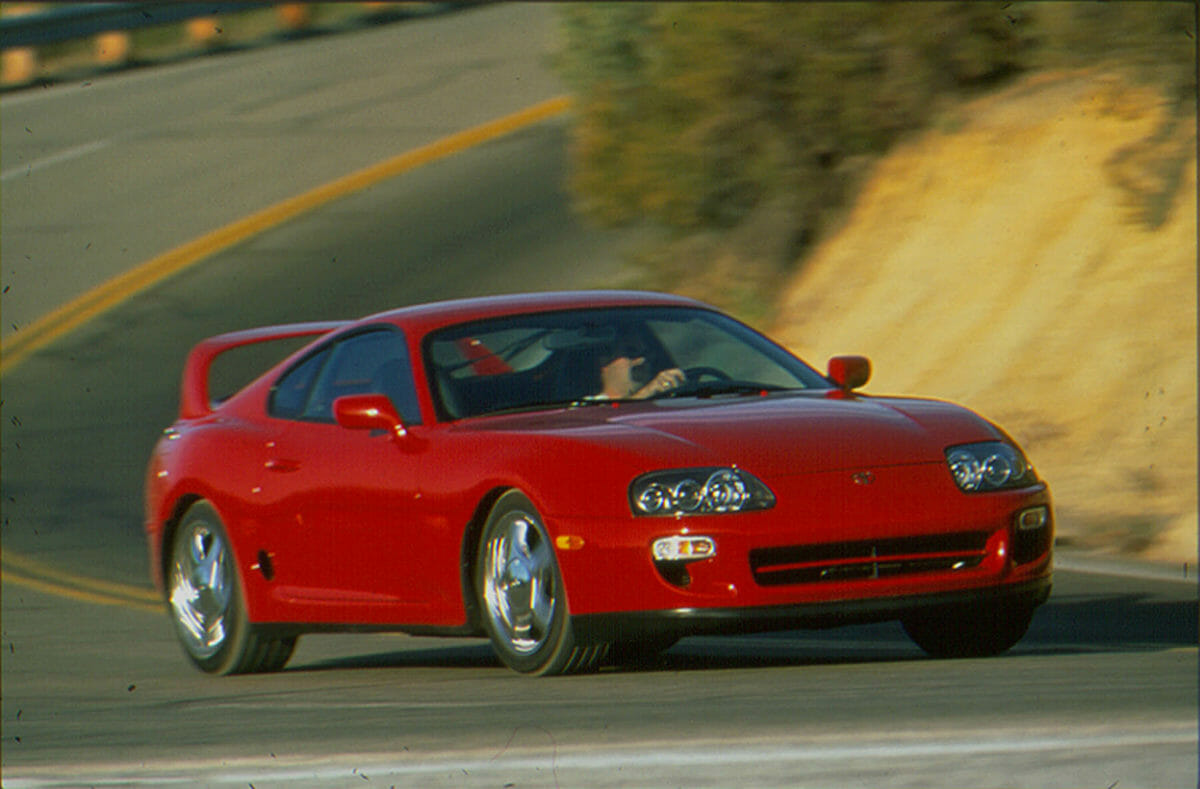
A80 Toyota Supra Engine (1994-1998)
Toyota’s fourth-generation Supra became a heavier, softer, more luxurious grand touring coupe, though powered by its hairiest engine, by far, to this point.
The “M” designation was gone, but the 2JZ-GE six was still a 3.0-liter DOHC inline engine, with four valves per cylinder, rated 222 horsepower and 209 lb.-ft. in naturally aspirated form, very close to the output of the previous turbo engine. The manual transmission option was now a six-speed, though the automatic was still just a four-speed unit.
The twin-turbo 2JZ-GTE is the most coveted of Toyota inline sixes, however, rated at 320 horsepower and 315 lb.-ft., with a six-speed manual manufactured by Getrag.
Like the twin-scroll inline-six turbo in the new Supra, the twin-turbo in the 2JZ-GTE mitigates “turbo lag.” The twin-scroll turbos work well, Toyota’s Ericksen says, with virtually no lag, and the engines are very reliable, unusual among turbocharged engines of the era.
For the 1996 model year, Toyota dropped the six-speed manual option on twin-turbo Supras sold in North America because of new U.S. OBD-II rules (on-board diagnostics, updated for cleaner emission standards).
The six-speed manual was offered on the turbo Supra in North America again for the 1997 model year, but thanks to rapidly dwindling consumer interest in sport coupes, it would be the penultimate year for the sporty model here. Ericksen, then in regional sales and distribution for Toyota, said many dealerships refused to order the car for their inventories.
The ‘98 Supra was the last offered here until the all-new 2019 model, though Toyota continued to build the A80 through 2002 for the JDM and other markets.
Motor Trend recorded a 4.9-second 0-60 mph time for a ’93 Supra turbo, and a very quick 3.9 seconds for a 1997 model.
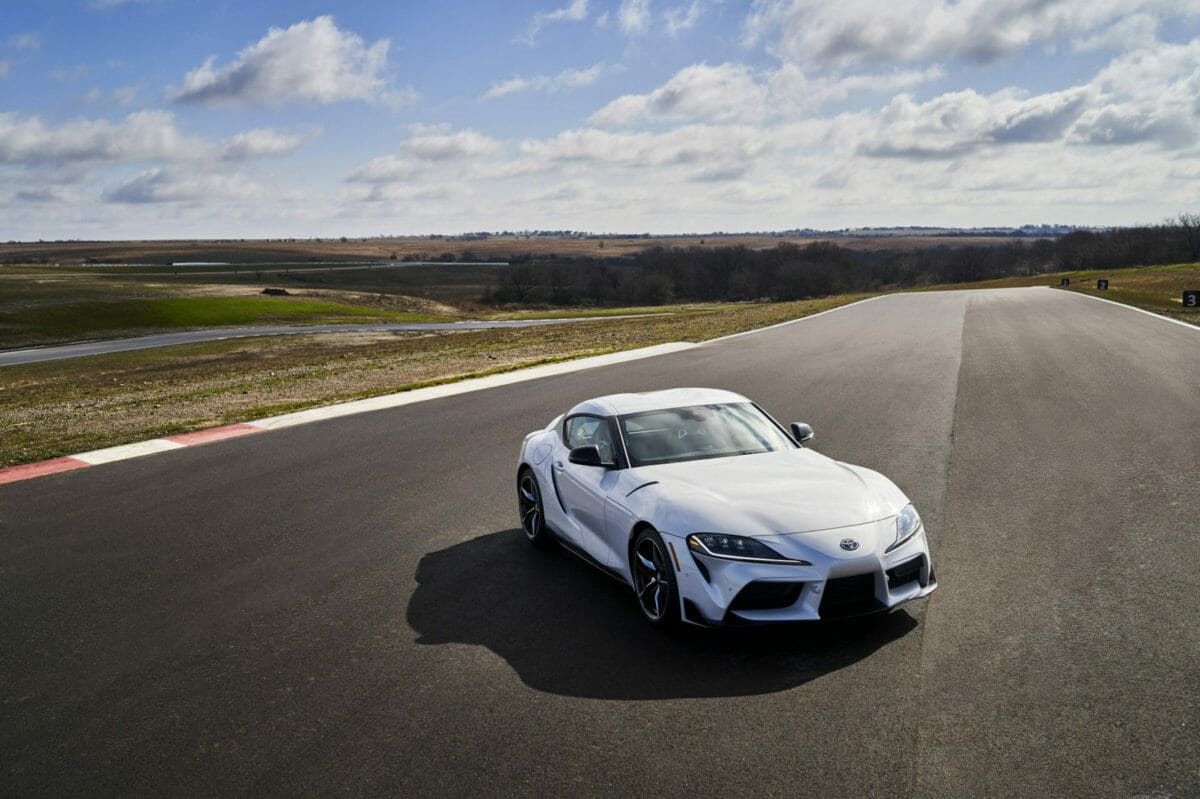
Which Toyota Supra Engine is Best?
If you’re in the market for a Toyota Supra you plan to use as a daily driver, or even as a fun weekend/summer sports car, there is but one choice: the new A90 model, with the bigger BMW turbo inline-six. It is a modern, reliable sports car worthy of the Supra name.
Classic Toyota-powered Supras are at least 23 years old. While known for bulletproof reliability, the 1979-1998 Toyota Supras are enthusiasts’ collector cars by now, and their values are going up accordingly — and they’re becoming harder to find. [This article did not cover Toyota-built four-cylinder engines offered only in the JDM Supras over the years. It is possible but unlikely you’ll find one of these offered for sale in North America – non-U.S. specification cars are legally for sale here once they are 25 years old.]
One Toyota Supra inline-six stands out for Cooper Ericksen, Toyota’s V.P. of Product Planning. “There’s no doubt, it’s the twin-turbo,” the A80’s 2JZ-GTE. “The twin-turbo is just so much fun. So fast.”
Beware that many classic Supras have been modified especially under the hood. “You can get more than 800 horsepower” out of an A80 twin-turbo “without blowing a head gasket,” he says.
One movie series has helped push up the value of that car, say Ericksen: “Very few people cared about Supras until Fast & Furious came out. Without that movie, Supra wouldn’t be Supra.”
Ericksen warns that while the new Toyota Supra comes only with an eight-speed automatic, that’s twice as many gears as the A40-A80 automatics, with more transmission “slop” and much slower shifts. Best to look for any of the classic Toyota Supras with a manual gearbox transmitting power from its inline-six.
His dream-project car is an A60 Toyota Supra, with its distinctive sheet metal and popup headlights, which he would re-build with a later model’s independent rear suspension and the 2JZ-GTE twin-turbo six.
Photos: Toyota
